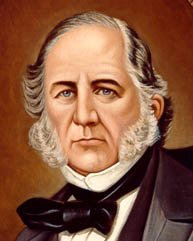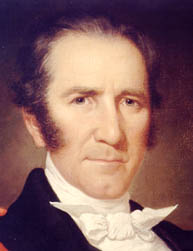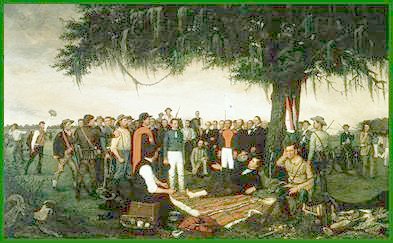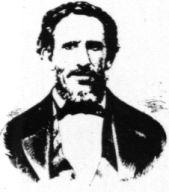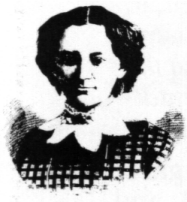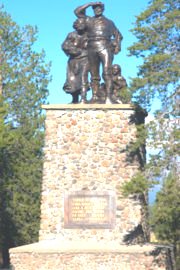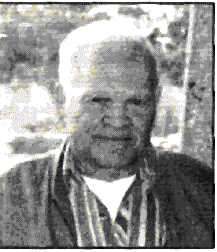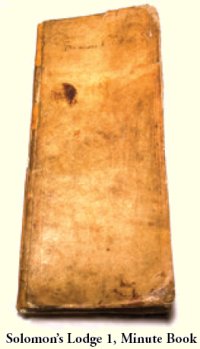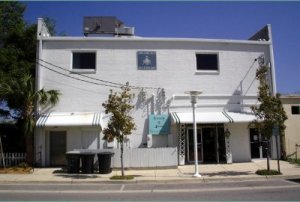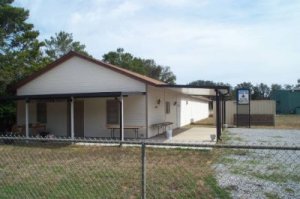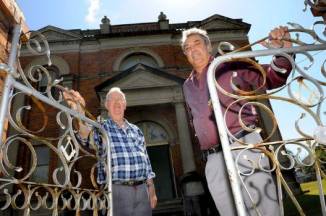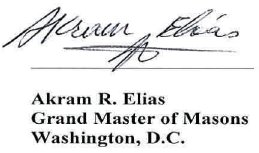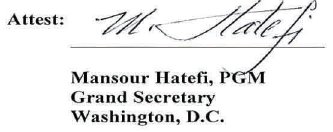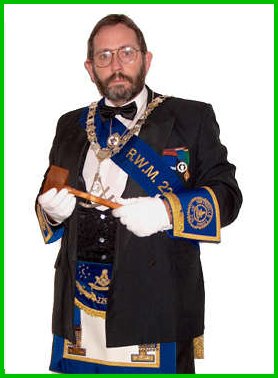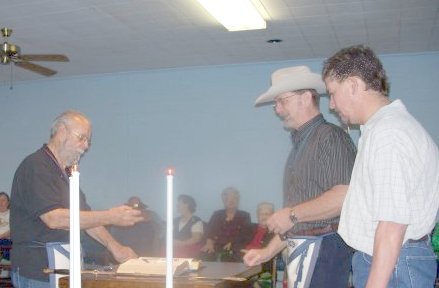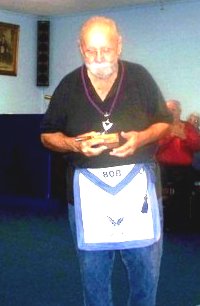
|
Beginning this month the Small Town Texas Masons E-magazine will be published monthly

Post Oak Island Lodge #181 AF & AM
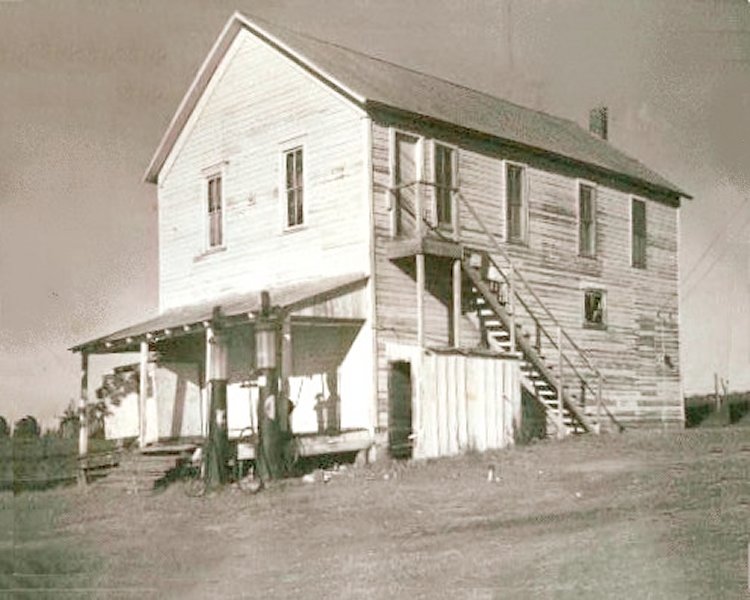 Post Oak Island Lodge #181 A.F. & A.M. |
|
Page III |
|
By Jackson Daugherty 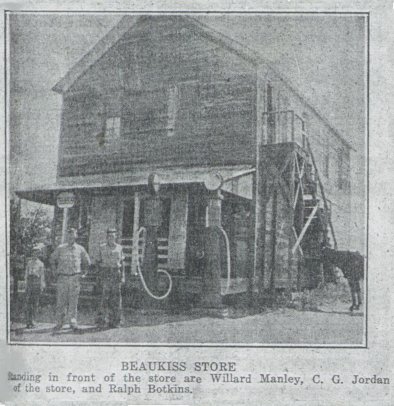 Post Oak Island Lodge #181, AF&AM , chartered on June 24, 1856, held it's first meeting at the town of Post Oak Island. One of the very earliest settlements in the county, the town of Post Oak Island had been in existence at least by 1839, almost a decade before the formation of Williamson County. On the 1850 Texas Land Office map for the county, the only towns shown are Georgetown and Post Oak Island. In 1878, Lodge 181 moved to Sam Smith Springs, some four miles to the southeast, in Lee County. This move is said to have been made because all sources of timber in the vicinity of Post Oak Island had been depleted; having been cut down for use as firewood and building material. When David B. Lawhon later purchased the land covering these springs, the name was changed from Sam Smith Springs to Lawhon Springs. It was at Sam Smith Springs that the tradition of utilizing the Lodge to serve the community as a school and a meeting place as well as a meeting place for the Masons, originated. The lower floor of the building was put to use as a school and by 1898 the enrollment had reached 92. One of the first students in this school, Hode Hobbs, recalled in later years how he, then a young man, had watched as the building was torn down at the close of the 19th century. The lower part of the building was left in place for continued use as a school, and lumber from the upper half was utilized in construction of the new Lodge building in Beaukiss. It has been generally accepted as fact that the building itself was moved to Lawhon Springs and thence to Beaukiss. "History of Lee County", published in 1974 states "the lodge building was moved from Post Oak Island to Lawhon Springs and later to Beaukiss where the lodge is still active." In Clara Scarbrough's book, "Land of Good Water", it is stated that "the Masons built a Lodge Hall which was later moved to Beaukiss where the lodge is still active." Records in the "Proceedings of the Grand Lodge of Texas" indicate that at no time was there any movement of the buildings, only the organization was moved to a new location and a new building. The present Post Oak Island Lodge #181 building at Beaukiss was completed in 1900 and has been in continuous use since that time. It is a two story balloon-frame structure, 40'3" X 22'3", with a 7 foot wide porch across the front. The siding is 1X6 vee edge of long-leaf pine applied horizontally. The double-hung windows were replaced a few years ago. Porches are roofed with a standard rib, corrugated galvanized iron. A similar material with a smaller rib is used on the main roof. The first meeting at the lodge in Beaukiss was held on June 24, 1901. The building continued its dual function of serving the community and as a meeting place for the Masonic members. The lower floor served as a General Store, and it also served as the Post Office for Beaukiss. In 1900 the population of Beaukiss was 114 but by 1960 it had dwindled to 20. Today the only remaining evidence of a town is the current Lodge building and a Methodist Church. Typical of older Masonic Lodges the building had no windows on the ground floor. When it was first completed in 1900 the only entrance to the second floor was an outside stairway. Shortly after World War II, the Post Office was discontinued and the General Store went out of business. Members of the Lodge then moved the outside stairway into the building where it still serves as the entrance to the second floor. Some of the original furniture from the first lodge building is still in use today. Chairs made of elm wood with rawhide seats, dating from 1855, are used in the present Lodge. One of these original chairs is on exhibit in the Grand Lodge of Texas in Waco.
At the present time no formal use is being made of the first floor by outside agencies. However, community meetings, barbecues, ice cream socials and covered dish dinners continue to be held there. Members of Post Oak Island #181, AF&AM still meet there on the first Thursday of each month.
|
|
Page IV | ||
Sam Houston "A Man of Honor"
Sam Houston came from a lineage of Scots who had settled in Virginia in the early 1700's. His father, also named Samuel Houston, was a member of Morgan's Rifle Brigade during the Revolutionary War, and had a lifelong commitment to military affairs. Sam Houston was born March 2, 1793 near Lexington, Virginia. In the spring of 1807, after the death of his father and around his 14th birthday, Sam moved to eastern Tennessee with his mother and family, but Sam was a free spirit. He was not cut out to be a planter.
One morning, at the age of 15, Sam crossed into Indian country, spent some three years, off and on, with the Cherokees and was adopted as a son by the chief Ooloo-te-ka, which translated means "He-puts-the-Drum-Away." This new father gave him the name Co-lon-neh, which was the word for "Raven". His boyhood stay with the Indians shaped his outlook on life, and developed a life-long call to the wilderness. Houston's planning and cunning were those of an Indian -- carefully listening and stalking.
One morning, at the age of 15, Sam crossed into Indian country, spent some three years, off and on, with the Cherokees and was adopted as a son by the chief Ooloo-te-ka, which translated means "He-puts-the-Drum-Away." This new father gave him the name Co-lon-neh, which was the word for "Raven". His boyhood stay with the Indians shaped his outlook on life, and developed a life-long call to the wilderness. Houston's planning and cunning were those of an Indian -- carefully listening and stalking.
At the age of 19, Sam returned from the Cherokees and taught school until he had enough money to pay his debts. In 1813, Sam joined a militia assembled by Andrew Jackson after receiving permission of his mother . She gave her son two gifts: a gold ring and a musket. Inscribed inside the gold ring was the word "honor," because she said this one word epitomized the creed that should forever be a part of Sam Houston's life, Houston wore this ring until his death.
Houston followed Andrew Jackson to Alabama to fight in a war against the Creek Indians, who were allies of the British. Houston led several courageous charges and was wounded from an arrow, as well as from bullets to the arm and shoulder. Houston forced a young lieutenant. at the point of a sword to pull the arrow out of his leg in the midst of the battle, which Andrew Jackson took notice, and became the start of a lifelong friendship between the two men. In 1817 Houston joined Jackson's Lodge, Cumberland No. 8 at Nashville.
After leaving the Army in 1818, Houston went to Nashville and studied to be a lawyer, and quickly began to rise in Tennessee politics. He became a part of the inner circle of advisors to Andrew Jackson. In 1823, he was elected to the U.S. Congress, and four years later he was elected governor of Tennessee.
Houston resigned as governor after a failed marriage and retreated to his old friends - the Cherokees, who at that time had moved to Arkansas. Sam proclaimed himself a "citizen" of the Cherokee nation, and took a Cherokee wife, named Tiana Rogers, a widow. (Tiana's nephew, several generations removed, was Will Rogers). Through the force of his personality, Sam Houston became a leader among the Indian tribes of the area, serving for them as an ambassador to Washington. He came to Washington dressed Indian style, which was quite unique. Imagine Sam Houston, tall and forceful, appearing before President Andrew Jackson, arrayed in colorfully woven blankets, a buckskin coat with metal ornaments, his face clean shaven in the Indian style.
|
|
Page V | ||
Continued From Page IV
Sam Houston's Army began a classic withdrawal movement into east Texas, forcing the Mexicans to abandon their supply lines behind rising rivers, until he arrived at the mouth of the San Jacinto River, where it empties into Galveston Bay. On the afternoon of April 21, 1836, just as Santa Anna felt he had the Texans trapped, Sam Houston led the charge in what was to become one of the most significant battles in American history. Some 800 Texans mounted a surprise attack against the Mexican encampment. With the battle cry, "Remember the Alamo! Remember Goliad!", the Texans charged. Outnumbered and outgunned, the Texas Army defeated a force nearly twice its size in only eighteen minutes. The Texans suffered only 6 killed, while the Mexican Army had 630 killed, 208 wounded, and the Texans took 730 prisoners. Santa Anna was captured alive.
Houston was elected the first President of the Republic of Texas and served from 1836 to 1838, and again from 1841 to 1844. On December 20, 1837, Houston presided over the Masons that met in the Texas Senate Chamber and resolved to form the Grand Lodge of the Republic of Texas. By then, three lodges had been chartered in Texas by the Grand Lodge of Louisiana: Holland Lodge No. 36, Milam Lodge No. 40 at Nacogdoches, and McFarland Lodge No. 41 at San Augustine. President Houston presided over a convention with representatives of these three lodges in the city of Houston, and elected Anson Jones the first Grand Master of Masons in Texas. Sam Houston married Margaret Lea in Marion, Alabama, in 1840. (Tiana, his Cherokee wife, had died earlier.) Although in her twenties when introduced, it was apparently love at first sight for Margaret. After Texas was admitted to the Union, Sam Houston served as U.S. Senator for Texas from 1846 to 1859. In 1859, Houston ran for Governor of Texas on an anti-secession platform, which meant he was opposed to having Texas secede from the Union. However, in 1861, Texas voted to secede anyway. Houston refused to take an oath of allegiance to the new Confederacy, and he was removed as governor. Houston then retired to private life to the town of Huntsville. His son, Sam Houston Jr., fought for the Confederates and was wounded in Tennessee. Sam Houston died in Huntsville in July 1863, while Margaret was at his bedside. His final words were "Texas -- Texas ! -- Margaret -- ".
Sam Houston was truly "a Man of Honor" and is certainly worthy of our emulation. He was a dedicated Mason. Houston, and great leaders like him, established our State and our fraternity under trying conditions and would be proud to see the way it has grown in the past 160 years. Now it is up to us to see that the tradition is carried on. We must educate our children in the values that were cherished enough by our founders that they risked and sacrificed their lives that we might live in a free country. We must see that Masonry in Texas remains an influence for good that cannot be denied. We must educate our members of the Craft so that our children's children will be as proud of us as we are of our founders. Brethren, love your lodge, and help it to grow. Love your fraternity and practice its tenants that "the world at large" may be "convinced of its good effects." | ||
 The square as an emblem is geometrical and not mechanical in its origin according to authorities, who trace it back to the ancient Egyptians, who in solemn processions carried the cubit of justice, by which perpendiculars, right angles and squares might be laid our, its form being that of one arm of a square, with the inner end cut to an angle of 45 degrees. The square as an emblem is geometrical and not mechanical in its origin according to authorities, who trace it back to the ancient Egyptians, who in solemn processions carried the cubit of justice, by which perpendiculars, right angles and squares might be laid our, its form being that of one arm of a square, with the inner end cut to an angle of 45 degrees."The close analogy between justice and that which is perfectly upright is so obvious as to have become universal. The terms 'an upright man' and a 'just man' are in nearly all languages synonymous, hence the scriptural phrases: 'The way of the just is uprightness; thou, most upright, dost weigh the path of the just;' 'He that walketh uprightly' and the admonition 'to walk uprightly before God and man.' Besides this, the square was used in Egypt to redetermine the boundaries of each man's possessions when, as frequently happened, the landmarks were swept away by the inundation of the Nile, thus recovering to every man his just rights. The Egyptian land-measure itself was an aroura or a square, containing one hundred cubits.
"The square representing the fourth part of a circle, has a direct allusion to division of the ecliptic and celestial equator into four equal parts, indicative of the solstitial and equinoctial points, and the division of the year into four seasons. By it we are also enabled to divide the circle of the horizon into quadrants, and by the aid of the sun in the south to correctly mark out the four cardinal points of the compass. In not only geometry, but astronomy also, the use of the right angle is indispensible. |
|
Page VI | ||
From The California Freemason On-Line
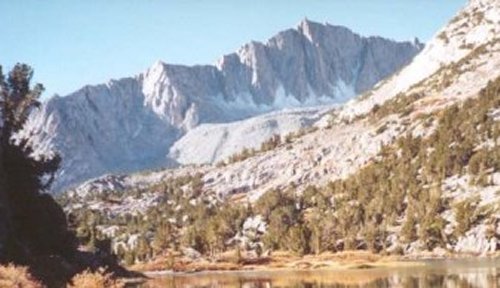 The Sierras Nevada Mountains
"My Mother turned to Mr. Glover, ^Are you a Mason?' He replied he was. "Will you promise me on the word of a Mason?" He pledged he would." - Virginia Reed.
One of the most terrible and famous tragedies in the history of the American West was that suffered by the Donner party. The group was organized in Illinois in 1846 by Jacob and George Donner and joined by others including James Fraizer Reed, his wife and four children, making in all a group of 87, who chose at a critical point in their trek to follow an untested passage to California recommended by a guide. The group found the route through eastern Utah far more difficult than expected. It was further plagued by jealous quarrels in which one of the party was killed by James Fraizer Reed. Having lost weeks on the trail the inexperienced party began to cross the Sierra Nevada's in late October. After only a week they found themselves snowbound high in the mountains with little food or shelter. In the middle of December 1846, seventeen members of the group set out in a desperate attempt to find help. Only seven reached civilization. Rescue parties were later sent to aid the emigrants. Many of those who remained in camp starved to death while others resorted to cannibalism. Of the original 87 only 47 survived. The Thornton Account According to Thornton's story, the first misfortune to the Donner Party occurred in Utah when a quarrel developed between John Synder, driving the (Braves family team, and James F. Reed. After receiving a blow to the head from Synder's whip and, in an act of self-defense by most accounts, Reed stabbed Synder "a little below the collar bone . . . and driving the knife through the left lung." Snyder then struck Mrs. Reed upon the head and directed other blows on Reed. Snyder died fifteen minutes later. (A footnote states the fight became an issue of great controversy.) Although Reed was compelled to do as he did, the fight and Synder's death produced much reaction against Reed. He was banished from the group and forced to leave the camp. The James F. Reed Account
The Virginia Reed Story Virginia Reed wrote a letter dated May 16, 1847, in which she gave a dramatic account of the family's sufferings through the her eyes as a young girl. She tells how the company divided at the Great Salt Lake, where those who went by the old route to California arrived safely. The Donner party took the another route recommended by the guide, Lansford Hastings, who claimed it would shorten the distance to California by 300 miles. The Snow Bound Donner Party By Thornton's account, on October 31, 1846, the Donner party encamped at Truckee Lake (now Donner) at the foot of Fremont's Pass (now Donner Pass) at 9,838 feet. The next day the whole body started to cross the mountains but had to turn back, resigned to spending the winter in the mountains.
|
|
Page VII | ||||
Continued From Page 6
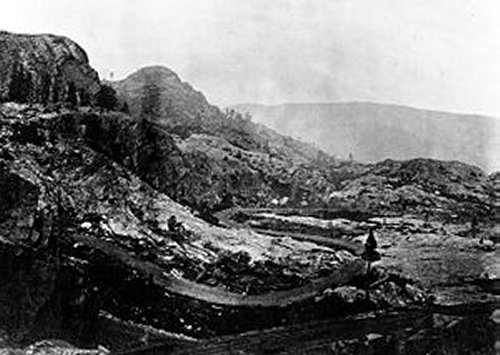 The Donner Pass "Are You a Mason?" On February 21, the rescue party headed by Glover started back with twenty-three survivors, principally women and children. After proceeding two miles, two of the Reed children were so ill they were returned to camp. Glover promised Mrs. Reed that he would return for the children. Mrs. Reed asked him, "Are you a Mason?" Receiving an affirmative answer she said, "Do you promise me, upon the word of a Mason, that when you arrive at Bear River valley, you will return and bring out my children, if we shall not in the mean time meet their father coming for them?" Glover replied, "I do thus promise." The Virginia Reed Letter
The Reed Family United Coming out of the mountains on February 27, the relief party met Reed and his rescue party in Bear River valley. Reed continued on to the Mountain camp where he found his children, Patty and Tommy. According to Thornton's account, Patty told her father, "Oh! Papa. I never expected to see you again when the cruel people drove you out of the camp. But I knew God was good, and would do what was best. Is dear Mama alive? Is Mr. Glover living. Did you know he was a Mason? Oh! my dear Papa, I am so happy to see you. Masons must be good men. Is Mr. Glover the same sort of Mason we had in Springfield? He promised Mama, upon the word of a Mason, that he would bring me and Tommy out of the mountains." Mr. Reed told Patty that Masons were the same everywhere and that he had met her mother and had relieved Mr. Glover of his pledge to return. James F. Reed's statement published in 1871 contains a strangely laconic description of his meeting with the Glover's rescue party. "We passed on and at the head of Bear Valley met the party returning with women and children. Among them was my wife and two of my children. We delayed no time, only a few minutes and pushed on ..." The Masonic Connections
Aquilla Glover, one of the rescuers of the ill-fated Donner Party, first met James F. Reed at Sutter's Fort. Reed recognized him as a Mason and asked for his help. Sherman's Fifty Year History of Freemasonry in California states that Glover was probably a member of a lodge near Warsaw, Benton County, Missouri, and that his Masonic regalia was burned during a fire in San Jose in 1854 or 1855. James Frazier Reed was a member of Springfield Lodge No. 4, Illinois, and Chapter No. 4, Royal Arch Masons. He was one of 15 (with William Eddy) who petitioned for a dispensation for a lodge in San Jose, although his name does not appear as a charter member. He was the first treasurer of Howard Chapter No. 14, RAM.
George Yount was a member of Benicia Lodge No. 5. He assisted in the organization of Yount Lodge No. 12 at Napa and Caymus Lodge No. 93 at Yountville. He was Caymus Lodge's first junior warden, its master in 1859, and later Grand Bible Bearer. A generous man, Yount supplied provisions for the Donner party and took an entire family from the Donner party into his home until they recovered.
|
|
Page VIII | ||
Delivered in the Victorian Lodge of Research by Kent Henderson, Past Grand Sword Bearer - on July 23 1993
 Jesus E. And Grace Delgado's Masonic Wedding at The Main Temple of the Grand Lodge Of Puerto Rico. Jesus Is A Past Master Of The Respetable Logia Antorcha de Oriente # 65 A wedding, when mentioned in most circles, usually evokes pleasant thoughts, of a son or daughter commencing married life, of children, of grandchildren, the wedding day itself, the preparations, the happiness. When we add the word Masonic to the occasion, what emotions are then aroused ? Incredulity mostly, I'd suggest. Most Masons, at least in this country, have never heard of such a thing. Indeed, most would immediately think - how could such be possible? Is not a wedding a religious occasion, and as such how can you have a Masonic wedding in our organization which is neither a religion or a substitute for a religion? Surely a wedding is for the church, not for the Masonic Temple ? But is it ? Freemasonry is not a religion, but its content is certainly religious in character as are, indeed, many organizations that function outside church doors. Parliamentary proceedings are religious - they open with prayers, but I doubt anybody would consider parliament a religion ! In truth, of course, a marriage does not need to be celebrated in a church. Essentially, while clearly derived in our society from the Judeo-Christian tradition, marriage is defined in the Oxford Dictionary as the condition of man and woman legally united for the purpose of living together etc. Thus, despite the religious connotations many ascribe to it, marriage is but a civil act. All one needs is a legally-designated marriage celebrant (who may or may not be affiliated to a religion) to require an unmarried man and unmarried women to sign a legal document binding the signatories to matrimony in law. Working backwards from the minimalist legal position, many religions have ceremonies to celebrate marriage, but marriage is not the sole preserve of religion. Many marrying couples, using a marriage celebrant can, and often do, write their own marriage ceremony. Why then, couldn't a Masonic Wedding ceremony be written ? The answer is there is no reason at all. The next question is if one was written, would it be considered regular? If such a ceremony was permitted to be worked by craft lodges under a recognized Masonic Constitution, then it must be tacitly considered as regular at least. Whether ones own jurisdiction allows it to be analogously worked is a different matter, but that is irrelevant in the context of its regularity. Now, I am here to tell you that a Masonic Wedding Ritual does exist. Not only does it exist, but it is officially sanctioned by at least one regular Grand Lodge (The Grand Lodge of Turkey), and is not infrequently used by its craft lodges. This ceremony, or one similar to it, is at least permitted to be worked in several other European jurisdictions. If you accept my logic as to regularity, the Wedding Ceremony must be considered a regular Craft ceremony by all Grand Lodges that recognize the Grand Lodges under which it is worked. In giving an analogous example, in the context of our own Grand Lodge, you would mention our Masonic Funeral Ritual, or our Vacant Chair Ceremony. Be that as it may, it needs to be recognized that the ceremony is also worked under irregular Grand Lodges, notably in France, but that does not ipso facto make the ceremony itself irregular.
To Read More Including The Ceremony Go To http://bessel.org/wedding.htm | ||
|
Secret society defies royal aides to set up lodge
By Douglas Wight
The branch of the controversial secret society was officially consecrated this week. It has male Palace servants and royal protection squad cops as members.
So the defiant masons simply changed the name to Mulberry Lodge — a reference to King James I who grew silkworms in a royal palace mulberry garden in the 17th-century. Police A royal source revealed: “They won't be meeting on royal property because all masons have to meet in a Masonic hall. But the lodge will be open to male members of the royal household — not just Buckingham Palace, but every royal residence from Balmoral to Windsor and the Tower of London.” “It's all being driven by cops in the Metropolitan Police royal protection squad. “The lodge has a cop as the grand master and another as the secretary.” Although the Queen's cousin the Duke of Kent is head of English freemasonry as its Grand Master, Palace officials had hoped plans for the lodge would be dropped. They felt a society whose members indulge in bizarre rituals was out of place. And it is the last thing the Palace needs at a time when it is trying to be seen as more modern and open. The Masons have long been accused of being of being a secret society that indulges in bizarre initiation ceremonies and traditions. They acknowledge each other through peculiar handshakes and wear aprons at meetings. And they have been accused of furthering each other's interests through the sect. The founding of the lodge has alarmed some royal staff who fear they will be overlooked for promotions if they don't join.
Women staff are said to be angry because although there are freemasonry organizations for women, this branch is a men-only institution that will not admit them. |
|
Page IX | |
By Danny Thomas, 33ø
(From the October 1990 Fresno Scottish Rite Bulletin with credit to Kansas Masonic Bulletin)
Our Order, for now I can say, "our order," teaches, "the brotherhood of man under the fatherhood of God" and this is great! The world needs so desperately to discover the value of this great truth in human relationships and world affairs. It is also a truth that will motivate men and women to continue to explore avenues of service and areas of common concerns in order to restore a measure of sanity to the madness of our day and to enrich the quality of life for all peoples everywhere. Now I join hands and heart with you in all your endeavors of philanthropy and say we must not slacken our efforts "to do good to all," especially those with needs that will not be met if we fail in our common task of service to humanity. On stage, screen, platform, and in private life I have always sought to bring a smile to the face of others and put a little joy in their lives. I am grateful now for the larger opportunity which is mine to adopt the tenets of Freemasonry as my own and hopefully be able to have a small part in spreading Masonry's message of love and caring to a larger audience, for wherever I go, I will be proud to tell others of my work and concern in behalf of all that you are doing, unselfishly, for others. Someone once asked me why did I want to be a Mason and my reply was: "Because Masons care for those who cannot care for themselves." The Shriners have always been a favorite of mine because of their work for crippled and burned children. Also I am excited about efforts proposed at the recent Conference of Grand Masters in regard to drug abuse among young people. It is great to be a Freemason! I am proud of what we are doing. I shall assist in every way I can our work of mercy, and it doesn't hurt to be a Brother with a "big mouth and lots of television cameras" to help get the message across. Masons are people of goodwill who want to "keep our kids alive" and we are doing this throughout the world. Our purpose is noble and humanitarian. Our labors will be crowned with success, for as Freemasons we will bring to our mission the best we have, regardless of what it demands from us in the way of sacrifice and service. We will make sure that in the tomorrows, life will be better for those who suffer today.
I was a Freemason in my heart long before I was accepted as a member in this great Fraternity. I was an outsider but now I am one of you, and the remaining years of my life will be spent in seeking in some small way to say to all: "Thank you for making me a Freemason." I want always to make you laugh but I trust that I will also make you care and that now, together, we will put melody in the heart of the world that will sing of a better life for all people. The task challenges us to larger efforts and higher goals that will demand from all of us the best we have to make a better life for others. My promise to Freemasons everywhere is that I will give the task my best! | |
|
By Corky
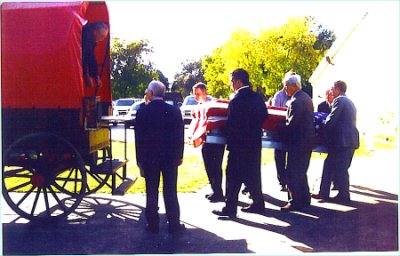 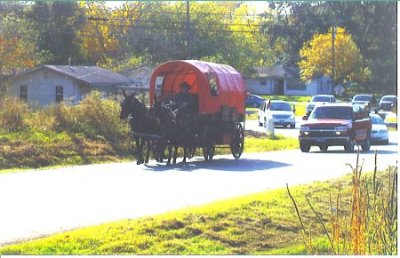
Brother Cromeans was a 32nd degree Mason and was a Deacon at Henry Prairie Baptist Church in Franklin. He served in the military service in the Calvary, Coast Guard and Special Forces for 5 years. He was a POW, received the Purple Heart and several other medals. When he was younger he loved to ride in rodeos as a bull rider and in team roping. He retired from Exxon after more than 30 years of service. After the religious service and Masonic service in Franklin, Brother Cromeans he was brought to the Cannon Funeral Home in Waller for another religious service for family and friends and for burial in the Waller Cemetery. It was Brother Cromeans' wish to be carried from the funeral home to the cemetery in a covered wagon. Luckly, Brother Jimmy Hooper Sr. of Waller Lodge #808 AF & AM owns a pair of mules and a wagon and was able to fulfill Brother Cromeans' wish.
|
|
Page X | |
by Catherine Walter, Curator Livingston Masonic Library by Catherine Walter, Curator Benedict Arnold: Freemason and Traitor Benedict Arnold's history shows that he was an ardent Patriot in the beginning of the War, his eagerness probably fueled by the trouble that the British were causing for colonial business men. In 1761 Benedict Arnold had opened a general store in New Haven, CT. With the sale of family property in 1764 Arnold became a merchant trader and began to travel to Canada and to the West Indies, where it is believed he became a Freemason.
In 1767 Benedict Arnold married Margaret Manseld, the daughter of a fellow Freemason, Samuel Manseld. Arnold had begun building a large house near his store in 1770, which was completed in 1771. His involvement in this project, and with a lawsuit he was engaged in, may explain why he was able to attend a meeting at Solomon s No. 1 on June 12, 1771, instead of beginning the seasons shipping travel. Freemasonry in Poughkeepsie On April 18, 1771 Provincial Grand Master George Harison issued a warrant to Solomon's Lodge No. 1, Poughkeepsie's first Masonic Lodge. The Lodge was re-numbered three times: once in 1797 when it surrendered its Provincial charter and was issued a new one as No. 56; once in 1800 when it was changed to No. 5, and finally in 1819 when it was changed to No. 6. In1828, after the Morgan affair, the Lodge disappeared; in 1832 the Grand Lodge forfeited their warrant. In 1852 the second Lodge in the area was warranted as Poughkeepsie Lodge No. 266. This Lodge is still in existence and is celebrating its 155 th Anniversary in June of 2007. In 1879 a third Masonic Lodge was warranted and named Triune Lodge N o. 782; and in 1922 a fourth, named Obed Lodge No. 984, was warranted. In 1986 these two Lodges merged to become Triune - Obed Lodge No. 782, which celebrates its 128 th Anniversary in September of 2007 . Revolution, Treason and Aftermath When the Revolution began on April 19, 1775 Benedict Arnold aggressively joined the fight against the British. His wife Margaret died on June 19 th, two months after the Revolution began. Arnold then spent the next four years fighting valiantly for the Revolution. In June of 1778 he was given command of Philadelphia. It was here in Philadelphia that he met his second wife, Peggy Shippen, who was a Loyalist and who was formerly loved and courted by Major André. Peggy s ambition is credited as one of the main reasons for Arnold s treason, another being Arnold s huge dissatisfaction with the treatment he was receiving from the new government, where he felt he had been passed over for promotions. He also felt unjustly charged with mismanaging his post in Philadelphia, where he had begun to live extravagantly. He was later court-martialed in Morristown, N J in June of 1779 for misuse o f both funds and army personnel. His sentence was a reprimand by the commander-in-chief, George Washington, a sentence confirmed by Congress on February 12 th, 1780. For Arnold, who felt wrongly accused, to be reprimanded by his friend Washington was not only embarrassing, but the thought it extremely insulting to all of the sacrifices he had made for the war effort. At this point, Benedict Arnold had alread y made his first overture to the British. After his humiliating censure, he turned down an active command position and convinced Washington to give him command of the strategically located West Point. On September 23, 1780, Arnold s traitorous plot to turn West Point over to the British as discovered by the capture of a British soldier, Major John André, by three Patriots: John Paulding, Isaac Van Wart, and David Williams. Paulding and Williams would later become Freemasons, with Paulding joining Cortlandt Lodge No. 34 in Cortlandt, N Y in the 1790s and Williams joining Lotus Lodge No. 31 in 1827, serving as its first Junior Warden. Benedict Arnold escaped to a British ship and later fought for the British against the Revolution. He died in poverty in London in 1801. André was killed by hanging, as regulations relating to a spy required, but he presented so sympathetic a figure that General Hamilton was moved to comment, “He died universally esteemed and universally regretted.” On May 16, 1781 Solomon s Lodge No. 1 passed a resolution which states: “Ordered that the Name of Benedict Arnold be considered as obliterated from the Minutes of this Lodge, a Traitor. His signature in the list of visitors to the Lodge on June 12, 1771 is crossed out in a way that allows identification of the name beneath. Next to the statement of the 1781 resolution is a small drawing of a hand, with a finger pointing at the word Traitor. Two years after the death of Major André , George Washington visited Solomon s Lodge N o. 1 on December 27, 1782 . At the meeting, part of an address read to the Commander-in-Chief was recorded in the minutes as follows: .We the Master, Wardens an d Brethren of Solomon's Lodge No. 1 are highly sensible of the Honor done to Masonry in general by the countenance shown to it by the most Dignified Character...
At the time of Washington's visit to the Lodge, the Revolutionary War was almost over. Britain declared an end to the hostilities on February 4, 1783 and the United States Congress declared an end to the war on April 11, 1783. The British did not evacuate completely from New York City, how ever, until almost a year after Washington's visit to Solomon's Lodge No. 1, leaving on November 25, 1783 as Washington to enter the city in triumph. |
|
Page XI | |
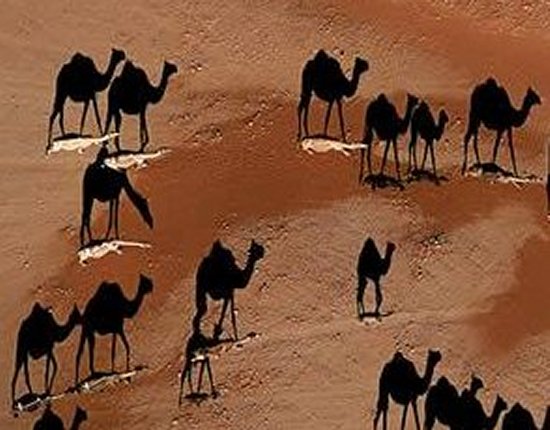 |
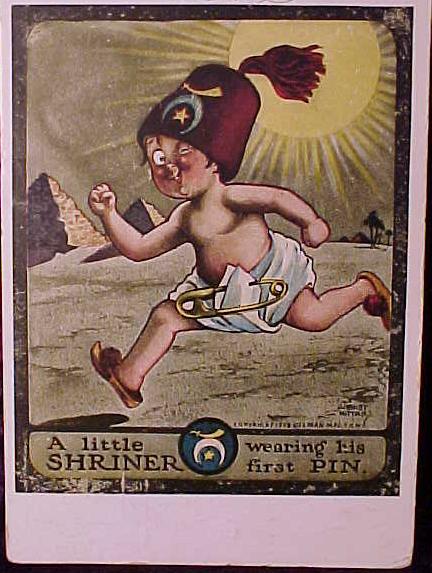 |
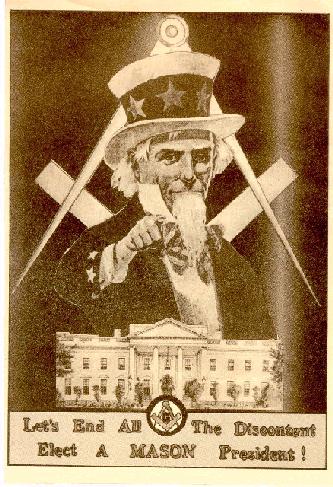 |
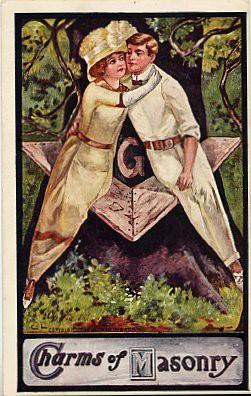 |
|
Page XII |
by Bishop Carl J. Sanders I AM A MASON! This plain and simple statement is said with pride, not apology! But to make such a statement is not enough. Reasons are expected and I give them briefly and almost in outline form. Because of the Friendships the Fraternity Has Offered Me These friendships reach back 50 years to a rural community in Virginia where I was raised a Master Mason. Those plain, simple men took me into their circle of friendship and sustained me through many of the difficulties a young minister will find in his first year out of the seminary. Across half a century, my life has been blessed by friends from all walks of life and many denominational groups. Freemasonry is truly ecumenical in its membership. In a day of mistrust, suspicion, discrimination, separation, and even hatred. Freemasonry removes the distance between men. Friendship, morality, and brotherly love are the hallmarks of our relationships. There is a basic integrity in the Fraternity so often lacking in many of life's relationships. Because of the Beautiful Ritual Rooted in Biblical History These Rituals relating to each Masonic degree are not forms without substance. Out of the ancient landmarks they come with honored words that plumb the depths of human emotion. As one who loves the beauty and meanings of words, I never tire of watching and listening to the granting of any degree, the opening and the closing of lodge meetings. Ancient Biblical history comes alive in the drama and language of Freemasonry. The beauty and order of a Masonic lodge added to the symbols so familiar to the Fraternity have meant so much to so many. Because of the Practice of Brotherhood and the Charitable Endeavors. Masons are not interested in shallow social activity, although they need and enjoy good fellowship. They are not interested only in a community service club, although they want to be proud of the service record and community image of the Fraternity to which they belong. Masonic homes, hospitals, and institutions are rendering a service to "the least of these" in such a manner that underscores the care and the devotion of the people called "Mason". No hospital offers quite the care for crippled children or burned children as ddo those that bear the name of "Mason". At no cost to the families, these hospitals open their doors and lives are restored and made whole again. Because of the Deep Religious Tone
Let me quickly and emphatically say that Freemasonry is not and has never been a religion, however, Freemasonry has always been a friend and ally of religion. In 50 years as a minister and a Mason, I have found no conflict between my Masonic beliefs and my Christian faith. I have not found and so not now find that Freemasonry is "incompatible with Christian faith and practice".
|
|
By John A. Thorp, P.A. Gr. D.E., England.
After the Norman conquest, England was invaded by a perfect army of ecclesiastics; and churches, monasteries, cathedrals and abbeys were commenced in every part of the country. Where these buildings were being erected in towns the work could be undertaken by the local guild, but when they were far from the populous places a difficulty as experienced in procuring sufficient skilled labor. To meet this, it is supposed that many experienced members of the guilds were induced to sever their connection with the local body and accept service under the new ecclesiastical authority, thus becoming free from the restrictions and limitations to which they had previously bee subject, and henceforth being designated Freemasons.
The church building Freemasons, being a national organization whose members travelled throughout the length and breadth of the land, wherever employment was obtainable, ofttimes found it impracticable to refer to their late employers for their character and qualifications. Hence arose the necessity for sign, token and word, with which our ancient brethren went to and fro. Whence came this sign, token and word? We do not know. We read of an assembly at York, 926 A.D., of which, however, no record remains. But there must have been a meeting held somewhere, at which regulations were adopted, which served to bind the brotherhood together for many generations
|
|
Page XIII | |
'Square, Level and Plumb' By Roger Luther Two weeks ago, there was a rare opportunity in Binghamton to witness an ancient craft -- the formal dedication of a building by the Free and Accepted Masons. It took place at the Castle, originally known as the New York State Inebriate Asylum, at the Greater Binghamton Health Center. Prior to that event, a Masonic dedication ceremony had not been seen in this area for decades. The ceremony was filled with ritual and symbolism. The "Great Architect of the Universe" was invoked and a cornerstone was placed in position. Tools of the craft were used in the ceremony: the square, the level and the plumb, each an implement of Masonry, and each representing moral attributes as well. Corn, wine and oil were poured on the stone signifying bounty, joy and peace. As in the original ceremony, on completion of each segment the Masons concluded that the craftsmen had done their job well, then in unison chanted "so mote it be," meaning "so it is." For those fortunate enough to witness the event, it was a solemn, moving and truly unforgettable experience. Established over 600 years ago, Freemasonry is claimed to be the oldest fraternal organization in the world. It first appeared in this area in 1798; the Grand Master was John Patterson and meetings were held in Joshua Whitney's log cabin.
Designed by Walter H. Whitlock and Charles H. Conrad, the building, with its classical six-column portico has elements of "Art Moderne" style. Inside was a large theater and two lodge rooms on the second floor. Upper floors held recreational rooms and a grand ballroom. In later years, the theater was rented out for concerts, Broadway performances and other events. Dances were held in the ballroom. During the 1960s and 1970s, it was home to the Tri-Cities Opera and Summer Savoyards. Local musician Eric Ross remembers seeing opera great Placido Domingo in a Tri-Cities Opera production at the Masonic Temple. With declining Masonic membership, in the mid-1980s, a plan was developed to renovate the upper floors into apartments for senior housing. Construction began and was well under way when, in 1990, funding came to a halt and the project was abruptly abandoned. Shortly after that, the Masons moved out; the building was sold at auction in December 2000. Former Mayor Richard Bucci announced that the new owner, a development group in Sarasota, Florida, which also owned the Grand Royale Hotel and the Drazen Building on State Street, planned to convert the Masonic Temple into student housing. In 2001, Binghamton University's administration announced that the student housing plan was in its final stages, stating that the building "was already separated into apartments 10 years ago," and it "has a common area large enough to fit a basketball court." It was not to be. Owner of the building David Band recalls that after the sale some structural work was done, the roof was repaired, and the building was secured. "Then the economy turned and the project was put on hold," he said. Now he is interested in selling the property. Today the grand entrance and the theater are filled with debris: piles of wooden seats, cabinets, construction material, pianos, toilets, an organ console -- everything but the kitchen sink. Make that everything including the kitchen sink -- at least three of them can be found in the rubble. In the pitch-black theater, a flashlight shows walls stripped bare. The stage that once supported lavish operatic productions is littered with trash. This grand hall, once filled with music, laughter and applause, is cold, dark and silent. The upper floors look like a work in progress. Walls have been demolished and new walls have been erected; electrical and plumbing work is unfinished. New windows are in place; bathtubs have been framed in. Piles of lumber and drywall sit waiting for workers to return -- workers who left the job nearly 20 years ago. Copper plumbing has been removed, presumably by vandals. In the catacombs beneath the auditorium, a ladder stands below an open window making for easy access by nocturnal visitors. Other than some architectural detail in the theater, there is little evidence of the building's original Masonic use. But on the top floor, in the midst of partially completed housing units, the old "Doric Room" remains somewhat intact. With its arched ceiling, a stage at one end and elevated seating along each side, the Doric Room was used for Masonic meetings and ceremonial events. I left the Masonic Temple with a few impressions. The building is a magnificent structure. It has a rich history and for 70 years provided a great service to this community. Today, the interior is a mess. With no climate control, 18 years of exposure to the elements has taken its toll. But the building itself appears to be structurally sound. Outside, I went to the northeast corner of the building to look for the cornerstone. There it was, engraved with a date and name of the Masonic Grand Master. On July 22, 1922, a ceremony took place at that very spot. The Great Architect of the Universe was invoked and the cornerstone was placed. It was positioned by square, level and plumb. It was sprinkled with corn, wine and oil. Today, in spite of years of neglect the building stands strong and proud, ready for its next use. The craftsmen did their job well.
So mote it be. |
|
Page XIV | |
By Susan Moon Tomball Magnolia Tribune Staff
The Magnolia Masonic Museum and Library will collect, preserve and house artifacts, relics, historical treasures and items relating to the Masonic organization and its history, according to Lee Howard, who is one of those developing the project. "Some items will be donated by local sources," he said, "while others will come from state or national sources." Howard said he knows of no other museums of this kind except for one in Houston. About 3,200 square feet, or half of the building, is dedicated to the museum and library. "Finishing the interior of the building, complete with tall wooden shelving and glass cases, depends on donations," said Howard. The land was donated by Howard and a business partner. Howard explained that the walls are essentially finished, while some wiring still needs to be completed, the ceiling needs to be installed and flooring laid before opening. "Hopefully we will be ready to open by the end of the year," he said. Howard said not many people know the profound effect the Masons had on education in the state. In the early to mid 1800s, there were no schools in the many settlements up and down the Brazos River and into what is now Montgomery County. Many of the settlers were Masons who built two story buildings as lodges in which to meet. There were no schools, so the Masons decided to use their lodges as schools. They turned the first floors into what was to become the first schoolhouses, and at their expense, hired teachers. The Masons moved their meetings upstairs, and oftentimes the lodges served as gathering places for churches on Sundays. One of those buildings still stands today, just off FM 1774 south of Plantersville. Howard, one of about 70 members of the Magnolia Masonic Lodge, said he and other members have an interest in making the history of the Masons available to schools in the area. "1 hope we will be able to take videos, along with historical artifacts into the schools so kids have a chance to see a unique historical perspective. According to Howard, the Masons have counted a number of famous people as members: Presidents George Washington, Thomas Jefferson and Gerald Ford; statesmen Benjamin Franklin, Gen. Sam Houston, Gen. Douglas MacArthur, and celebrities Roy Rogers, Gene Autry, Ernest Borgnine, Mel Tillis and Jim Reeves. Howard, who has lived in the area 32 years, is a history buff, especially "for all things Masonic." One of his favorite stories dates back to the days of Gen. Sam Houston and Santa Anna. "The story goes that Santa Anna was a Mason, and Sam Houston was, too," he said. "That's supposedly the only reason Houston didn't shoot him when he had the chance," he said. Howard said he is currently working on getting a copy of Santa Anna's Masonic apron for the museum. Howard said the group is involved in a number of fund-raising activities. "We are selling engraved bricks for $120 and $240 that will be laid in the entrance of the building, and can carry an inscription from the donor," he said. The group also sells barbecue briskets for Christmas, Memorial Day, Fourth of July and Labor Day. On Nov. 15 beginning at 2 p.m., a Blue and Gold fundraiser will be held to benefit the museum at Spur's Saloon at 10310 FM 1488 in Magnolia. Organizers say special entertainment will be provided by Texas music legend Gene Watson and the Farewell Party Band. A barbecue dinner, silent auction and live auction will be held.
Participation as an underwriter is $2,000 and entitles the donor to special recognition the day of the benefit, free barbecue and a reserved table for eight adjacent to the dance floor, and an inscribed brick with choice of inscription. |
|
Page XV | ||||
|
By Andrew Gant
FORT WALTON BEACH - Not much predates the Freemasons fraternity in Okaloosa County - not even the county itself. Not the Marler Bridge, named for Freemason William T. Marler. Not the Brooks Bridge to Okaloosa Island, named for the Brooks family that boasts two original Freemasons. Not W.C. Pryor Middle School, named for
The fraternity has turned 100 years old here. Members still meet regularly in downtown Fort Walton Beach, which makes the group one of the oldest standing organizations in Northwest Florida. "Not the oldest profession, mind you," said John Lewis, past master and emcee of the group's recent special centennial meeting. But the fact is that some of today's local Freemasons - as they sit in their antique upstairs lodge above the old Coach and Four Gifts - know more than most about Okaloosa County's history. The organization got its start in 1908, when the area was in Santa Rosa County and Fort Walton Beach was still known as Brooks Landing and later as Camp Walton. John Brooks Jr., the last of original Freemason John "Will" Brooks' nine children, was at the meeting, remembering his father - a jack-of-all-trades who served as the area's only deputy sheriff, tooth-puller, real estate agent, boat captain, auctioneer and lighthouse keeper. Today, the men at the lodge say Freemasonry is not all about mysterious rituals or codes - many of them featured in movies and novels - but more about Will Brooks' kind of service. "We don't really have that many secrets," Lewis said. "Just ask." The group funds charities and local programs such as the Mozart piano competition at Playground Music - named for the historic composer who also was a Freemason. The chapter also is working with the rest of Florida's nearly 300 lodges on an identification program designed to help find lost children. Mel Odum, a member since 1972 and master of the lodge in 1999, said the fraternity doesn't recruit. He said the lodge's doors are open to men who believe in God and ask to join.
"I'm proud to be a Mason with all of my friends here," he said. | ||||
|
By Desiree Duncan
Shrouded in secrecy since the Middle Ages, women are still banished from many Freemason lodges and temples in Queensland. So what was I doing deep in the hallowed halls of Wynnum’s Masonic Hall discussing the ins and outs of freemasonry with a member of the local brethren? Flagging membership is the answer. It’s so serious, temple secretary James Stebbings says, that it is time for the organisation to throw off the old ways of the brotherhood to try to attract younger members. ``We need more people ... all our members are getting on,’’ Mr Stebbings said. I was invited to inspect the hall and I leapt at the chance after all, I had often wondered what those mystery men did in the formidable building. On stepping through its solid front doors, I expected well, I have no idea what I expected. It certainly didn’t look like much had changed since the hall opened in 1920 and my tour revealed the once majestic 88-year-old building had fallen into disrepair. Moreton is one of five lodges, or groups of brethren, who meet at the Tingal Rd hall. Boasting 175 members 40 years ago, the lodge has only 40 members left. I can hear you asking me: ``What of the secrecy?’’ I was told older members rejected the idea of allowing a female journalist on site and into the temple room, for fear of exposing their ``secrets’’. ``I know we’re secret but we’re not really secret, just our rituals,’’ Mr Stebbings said. ``We’re not allowed to say anything,’’ he said. ``We take the vows and we respect them.’’ He said 100 percent of funds raised by Freemasons went to charity with the Leukaemia Foundation named as this year’s cause. ``Freemasons do a lot for the community and don’t tell anyone and it’s time we did,’’ Mr Stebbings said. ``Because of the secrecy over the years that work hasn’t been recognised.’’ Mr Stebbings, who proudly wears the Freemason’s emblem on his collar, said he would welcome approaches from anyone who wanted to find out more about Freemasonry.
``It’s all about getting people interested in the craft,’’ he said.
|
|
Page XVI | |||||
|
| By P.R.W.M. Mike Bauer (a buckeye in Scotland)
|
|
Page XVII | ||||
By Corky 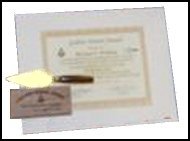
This is the greatest honor a Texas Masonic Lodge can bestow on a member for outstanding service to his Lodge and Masonry. Since I have only been a Mason for sixteen years, after being raised at age 64, I was very pleased that my efforts to make a contribution to Masonry were appreciated.
The Golden Trowel Award
Since its inception the Golden Trowel Award continues to be an exciting means for Lodges to recognize and honor distinguished members with an official award from the Grand Lodge of Texas. It is for use by all Texas Lodges.
Every Lodge has such members. They spread the living cement that builds our Fraternity into a true Brotherhood.
You will find them at labor in the kitchens, on the work committees, in public office, on community projects, in service clubs, heavily involved in their church activities
and in schools—anywhere that a true and steady hand of assistance is needed.
It is to those Master Craftsmen that the Golden Trowel Award is designated as the highest Award a Lodge can bestow upon an individual member.
This award is not intended to replace or supersede any individual recognition award already established by a Lodge. It provides the advantages of a single, official award,
which is recognized statewide. |
|
|

